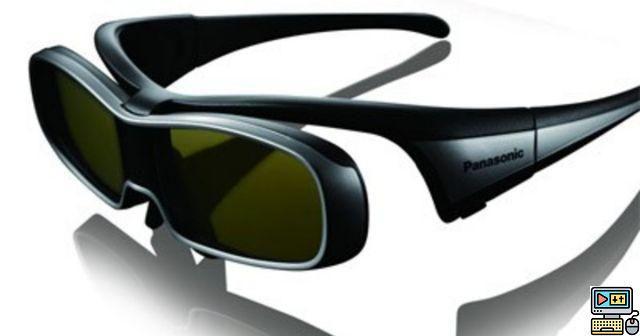 Active 3D Glasses and Passive Glasses By Vincent Lheur
Posted on 22/02/10 at 00h00 Share:
Active 3D Glasses and Passive Glasses By Vincent Lheur
Posted on 22/02/10 at 00h00 Share:
As we explained in the section "3D vision, how does it work?" », glasses are essential to recreate the feeling that we are watching a real scene in front of a screen; to be precise, other glassesless systems exist but are not yet efficient enough to be considered.
However, there are two types of glasses: active glasses and passive glasses. Each is associated with a different 3D diffusion process.
- We will start by detailing the active system since it is the one that has been retained by the Blu-ray 3D standard to equip individuals. With active glasses, the images intended for each eye are encoded one after the other. They are said to be sequentially encoded. The glasses must therefore be able to block the vision of the eye which must not see the displayed image while the other is looking at it. It is an LCD panel integrated into the glasses which takes care of this work. It is synchronized with the screen which sends an infrared signal to the glasses to tell them which eye to close. The right eye therefore sees an image, then the left eye, and so on... The brain only has to associate the two images captured from different points of view to recreate the 3D effect.
In this photo, we can clearly see the closing of the left lens, while the right eye can see the image intended for it.
- Le passive system use polarized glasses. The right lens is polarized one way while the left lens is polarized the other way. The image displayed on the screen is actually made up of two images
framed. One line out of two is therefore intended for one eye while the other line out of two is intended for the other eye. For each line of the screen, the emitted light is reverse-polarized to the previous line. Thus, the glasses allow only one line out of two to pass over each eye. In the passive system, each image displayed on the screen therefore consists of both the image intended for the right eye and the image intended for the left eye.
Advantages and disadvantages of each type of glasses
We therefore immediately see the limits of the passive system: the horizontal definition is halved since each eye only receives a “half-image”. For example, if we watch a Full HD movie in 3D, the 1080 lines will be divided into 540 lines for each eye.
On the other hand, passive glasses, without electronics or batteries, are lighter and less expensive. They cost from 2 to 30 euros, while the active glasses which necessarily carry electronics and batteries are heavier and cost around a hundred euros.
In any case, you will not have too many questions to ask yourself about the technology to be favored since all products intended for the general public should use the active system. The passive system will be reserved for professionals and for intensive use (bars, presentation rooms, etc.) since the glasses are less expensive, wear less and are easier to replace.


























